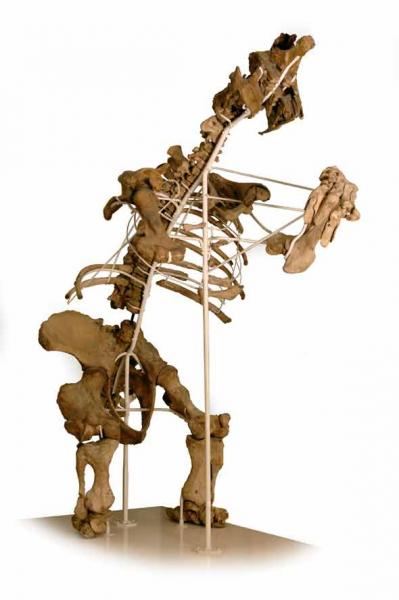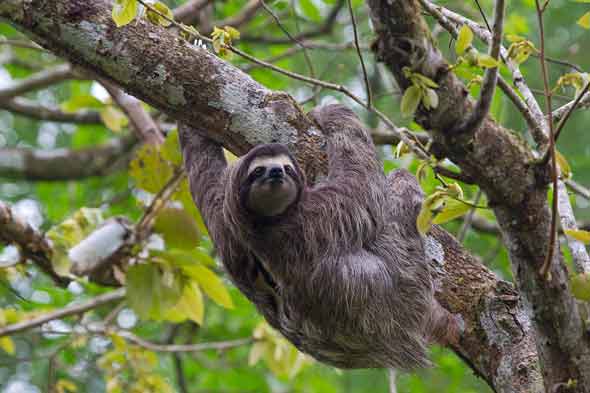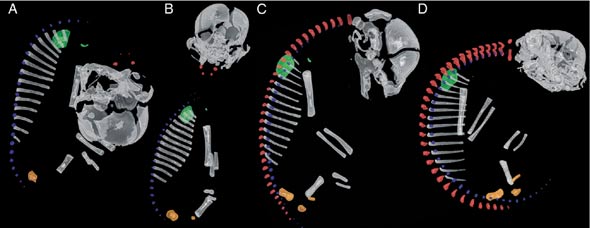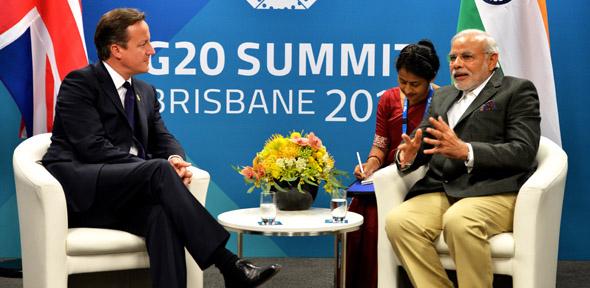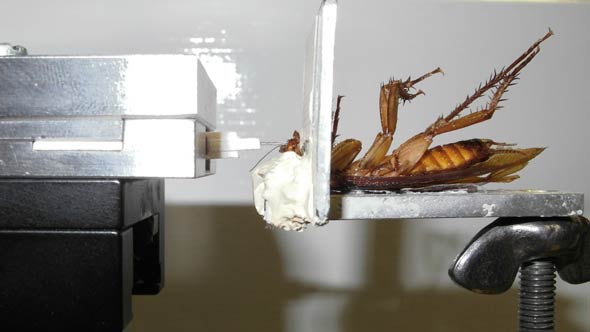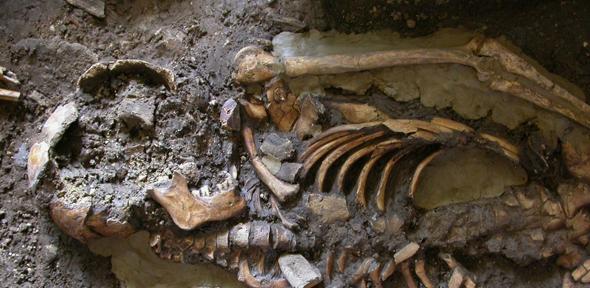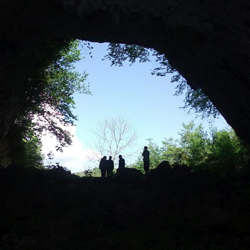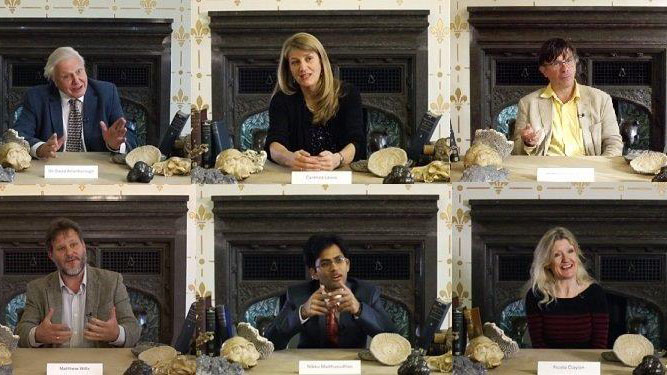“It was already looking at me when I saw it. As it started moving down the hill towards me, I was very aware that I was alone, with the others far ahead and out of sight. I started running down the trail, and could hear its bell jangling as it came after me. Ahead was a plank bridge spanning the rushing torrents and boulders below, and I thought: ‘If it overtakes me on this, if I go over, that’s it.’ By the time I made it across to the shelter of an overhanging rock, my heart was racing and I was shaking. Like many prominent features in this sacred landscape, the rock was inscribed with a mantra, and indeed the very one I’d been reciting as I flew across that bridge.”
Few people have found themselves chased by a yak in the course of their academic research – but that’s what happened to Dr Riamsara Kuyakanon Knapp while studying for her PhD in Cambridge’s Department of Geography. She recalls: “Looking at the photo I took at the time, I can see that it’s blurry because I was trembling and gasping to catch my breath. The yak pursuing me down the trail was a female, or dzo in the local language, and looks quite amicable in retrospect, but I wasn’t taking any chances!”
![]()
Her encounter with this female yak took place four years ago high in the Bhutan Himalaya. Yaks are powerfully built and not easily intimidated, and females are known to be protective of their young. Kuyakanon Knapp explains: “I think she was certainly on the lookout – I don’t know why she came after me, perhaps her calf was nearby, somewhere among the herd that was grazing in the rhododendron understory of the ancient evergreen forest. Grazing land in Bhutan, as elsewhere in the Himalaya, isn’t just grassy pastures but also comprises forest understory.”
Bhutan is famous for being the last Buddhist Himalayan kingdom, and is also renowned as a conservation landscape, due to its abundant forests and wildlife. Kuyakanon Knapp’s research focuses on understanding this cultural landscape, how people and environment interact to create a specific sense of “place” and, in particular, on the relationship between environmental conservation and Buddhist beliefs at multiple sites and scales. On the day of her yak encounter, Kuyakanon Knapp was on a pilgrimage trail, which passes through a remote region where the only inhabitants are monastics and herders who pasture their yaks in the high Himalaya during the summer. During the harsh winters yaks are brought down to ‘lower’ altitudes, around 3,500 metres above sea-level.
Yak herding has been part of life in the Himalayas for centuries, and yaks are uniquely adapted to their extreme environments, able to travel through and find forage in thick snow. The domesticated yak (Bos grunniens or ‘grunting ox’) provides most of the resources needed for survival in a tough environment. Its meat is a precious source of protein. Milk from female yaks is drunk raw and churned to make butter and cheese. The animal’s wiry outer wool is used to make yarn for weaving into material for tents and blankets and its under-layer of softer fibre used to make clothing that keeps out the bitter winter cold.
![]()
Nothing produced by the yak is wasted. In Tibet, coracles for ferrying across the wide, rapid rivers were made from yak hide – a material that is both light and strong – stretched over a flexible willow frame. Dried yak dung fuels the portable stoves used for cooking. Last but not least, the sturdy yak is used for traction and transport over terrain far too rough for a vehicle.
Kuyakanon Knapp says: “The yak is an integral part of high-altitude livelihoods, particularly in Bhutan, but also throughout the Himalayas, Tibet and Central Asia. They are a much prized and beloved livestock, and yak-rearing knowledge is something people are proud of. In addition to the animals’ practical place in community livelihoods, yaks have a place in legends, songs and festivals. Deities are supplicated and propitiated so that they will safeguard the welfare of herds.” The semi-nomadic Brokpa people of eastern Bhutan have a very special yak cham or ‘yak dance’, and the high-altitude village of Ura in central Bhutan has both the yak lha propitiation ceremony, and yak choe annual festival. Researcher Dr Karma Phuntsho (formerly at Cambridge’s Department of Social Anthropology) has written evocatively about how globalisation manifests in the changing practices a village festival.
![]()
Yak herders know their environment intimately, and this knowledge is culturally encoded, as seminal studies by Bhutanese scholars, such as Dasho Karma Ura of the Centre for Bhutan Studies in Thimphu, have shown. Building on this, conservation efforts by the Royal Government of Bhutan, the Bhutan Foundation and WWF have enlisted the help of herders to camera-trap the elusive snow leopard in order to better understand the ecology of this endangered species. The award-winning film The Yak Herder’s Son documents the friendship between a national park ranger and a young yak herder, asking the vital question of how all those who share the land – livestock, predator, herder, ranger – can live together in harmony.
For centuries, Bhutan, a Buddhist Himalayan kingdom, was effectively ‘closed’ to visitors and even today visas are hard to obtain. “As a researcher seeking permission to visit or work in Bhutan, you are likely to go through a rigorous application process. It’s very important to respect national and cultural sensibilities. Accountability and collaboration are essential, as they should be everywhere, but unfortunately this isn’t always the case. Especially in western or Euro-centric knowledge production, there is a real history of colonial extraction and appropriation that we need to be aware of and resist, as it still exists,” says Kuyakanon Knapp.
Westernised urbanites tend to romanticise life in stunningly beautiful and remote areas – and to lament the passing of traditional ways of life - but the reality of making ends meet for the average herder or farmer is far from idyllic. Like everyone else, Bhutanese farmers and villagers want to enjoy some of life’s comforts and for their children to attend school and have more choices. “Families want to have electricity in their homes, to cook rice and watch television, to have serviceable roads and cars for accessing markets and healthcare,” says Kuyakanon Knapp.
“Despite these shifts, the role of religion and religious devotion in daily life remain great, and this is what drew me to working in Bhutan, to understand a way of modernising without severing culture and tradition. It is deeply impressive to see that, on a fundamental level, most people in the countryside still value spiritual well-being above material well-being. The state is trying to ensure that this need not be a mutually exclusive choice through the Gross National Happiness (GNH) developmental framework.”
The Himalayas have long been a magnet for western travellers, who have included mountaineers, naturalists and collectors. Cambridge’s Museum of Archaeology and Anthropology (MAA) holds an exceptional collection of photographs taken by Frederick and Margaret Williamson, who took advantage of a colonial posting in Sikkim to travel extensively in the region during the 1930s. The adjacent Haddon Library for archaeology and anthropology has a collection of some 62,000 publications gathered over nearly 90 years, including rare books relating to the Himalayas.
“I’ll not forget the time I went into the Haddon and first picked up Nari Rustomji’s Bhutan Venture: A Guest at the Royal Court, documenting his trip to Bhutan in the 1955. He was, in his own words, ‘the first Indian after independence’ to visit Bhutan, which ‘was then regarded, like Tibet, as the forbidden land’. Written in ink on the fly leaf was that this book was a gift to the Haddon Library from the author, via the managers of the Frederick Williamson Memorial Fund. It was a direct connection to the past, to lived experience, and to the thinking and life history of a key historical actor. Rustomji’s admiration for the Bhutanese, and his travels in Bhutan took me straight back to my fieldwork year,” says Kuyakanon Knapp.
“Later I went and looked at some of the images in the Williamson Collection, and also read Margaret Williamson’s book Memoirs of a Political Officer's Wife in Tibet, Sikkim and Bhutan which includes a wonderful description of travelling on the back of a pony and then a yak in the 1930s.”
In recollections published in 1987, Williamson paints a vivid picture of the journey she undertook with her husband. “Having passed a moraine and the Tsogyu lake, we exchanged our ponies for sure-footed yaks, which were better-suited to high-altitude travelling. Mine was a nice, brown, silken-haired animal. We climbed higher and higher until we reached the foot of the glacier. On the way we passed more lakes and also saw some bharal (wild blue sheep). It was hard going even for yak over the ice, but in two and a half hours we reached the Mon-la Kar Chung pass … Gigantic crags … reared up on all sides, with the snow and ice on their knife-edged ridges glistening brilliantly in the crisp morning sunshine. Derrick [Frederick] and I stood there, utterly amazed at the sublime beauty and grandeur of the Himalayas.”
Next in the Cambridge Animal Alphabet: Z is for a transparent animal that provides a surprisingly good model for studying tuberculosis.
Have you missed the series so far? Catch up on Medium here.
Inset images: Travelling by yak in the 1930s, Tibet (©MAA N.101191.WIL, photograph taken by Frederick Williamson); Ku-Dru (Yak skin boats) in Tibet (©MAA N.103814.WIL, photograph by Frederick Williamson); The yak choe festival in the village or Ura (Riamsara Kuyakanon Knapp).





















